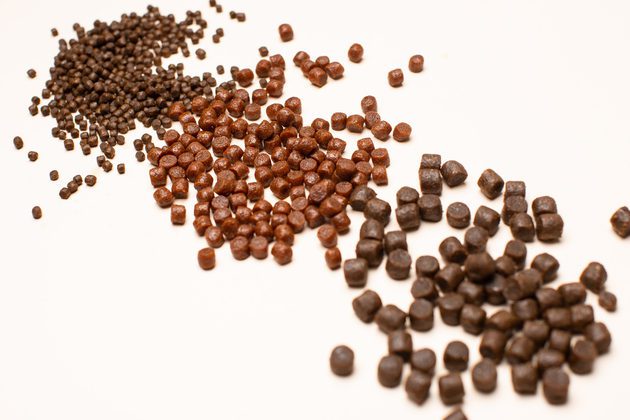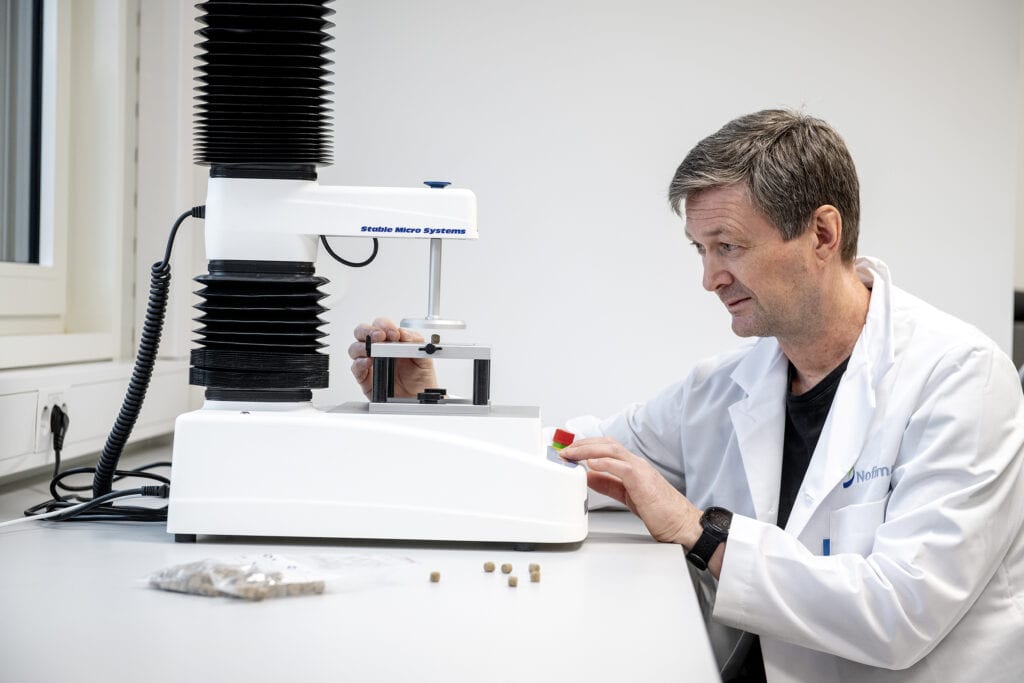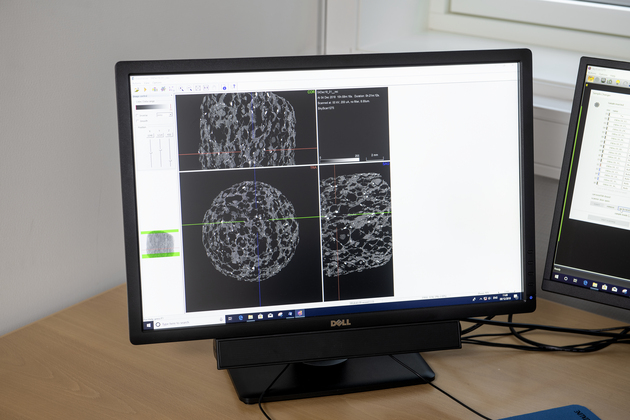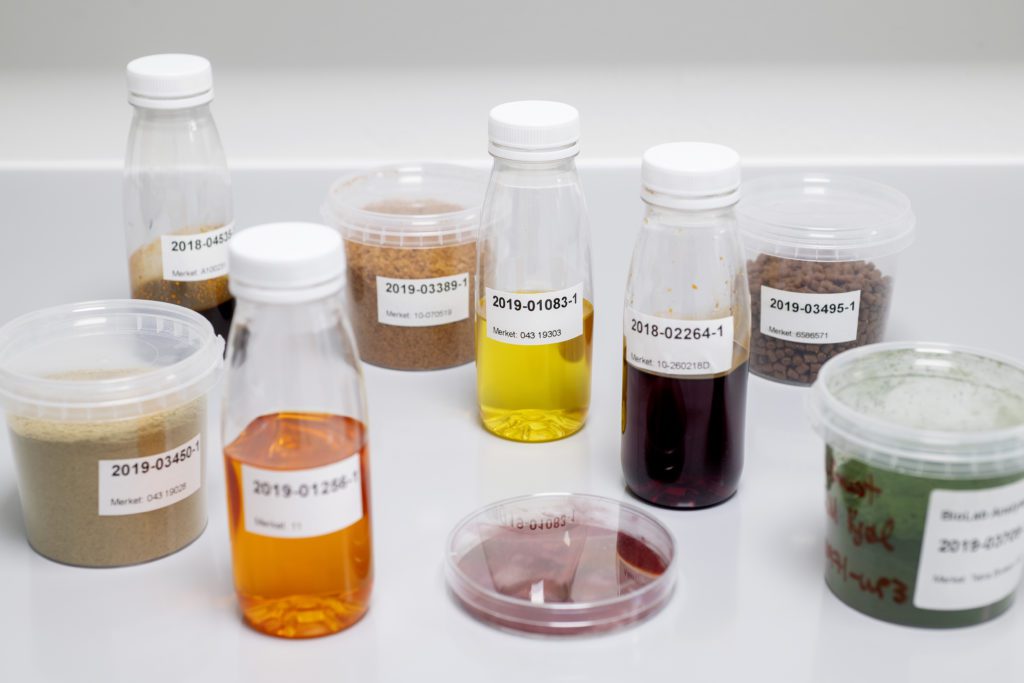Worth knowing about the complexity of fish feed

At Nofima, we study the functionality of new ingredients in feed for fish or shellfish. Fish feed is constantly evolving, and scientists and the feed industry are now searching for sustainable raw materials that can reduce the inclusion level of soy in feed pellets. Sustainable raw materials are often found lower down the food chain, such as algae and insects, among rest raw materials that are not utilised in other food production, and preferably sourced locally.
Worth knowing
People underestimate how important it is that new ingredients in fish feed can be used in a feed pellet, because it really isn’t that straight forward. Some ingredients require too much water, others require too high a temperature, while some negatively affect the strength and structure of the pellet. Similar to when you get the dough wrong when making bread at home. So, what requirements should we set when it comes to feed ingredients?
A fish feed must be of good technical quality

The main objective when producing a fish feed is that it must be nutritionally balanced so that fish eat and utilise the feed in the best possible manner. It must be of a high physical quality so it does not crush during transport to the feeding barges and pneumatic transport through long plastic pipes out to the net-pens.
During feeding, it is also very important that the pellet has the correct pore size so that the oil does not leak out of the pellet, as this can change the energy composition of the feed and clog the pipes.
The feed must also sink at the correct speed and be stable in water so that the fish have time to eat it. Feed that floats or sinks too quickly can leave the net-pens and increase feed loss.
How an ingredient affects these physical properties of the feed is called the technical quality of the ingredient.
The ingredients are processed into feed using extrusion technology

Helge Skodvin/Nofima
To enable to achieve all these feed characteristics simultaneously, so-called extrusion technology is used to produce the feed. This is done by heating and moistening the powdery feed mass with water and steam before feeding it into an extruder. There, the feed mixture is cooked and kneaded into a dough, expanded over the extruder dies, cut up to pieces and thereafter dried into pellets with a porous structure.
Salmon and trout feed contains high levels of oil. The pellet must therefore contain many pores that are filled with oil in a vacuum coater
The final feed is is then tested for physical quality to see if it is good enough. This includes hardness testing and how much mechanical handling a pellet can withstand before it crushes.
The characterisation of a fish feed pellet also includes a number of other measurements such as bulk density, ability to retain oil, sinking rate and water stability.
For example, feed for sea urchins and prawns should be able to remain in water for several days before dissolving. A significantly shorter time is required for fish feed, but water stability has also received greater attention if the feed is to be used in recirculation aquaculture systems (RAS).
Technical quality of the ingredients
In the Aquafeed Technology Centre (ATC) hosted by Nofima, we can produce experimental feeds composed of different types and levels of ingredients, and find out how they affect the extrusion process and the physical quality of the feed.
This is how we have studied the technical quality of several different ingredients, both old and new.

Fish meal
Fish meal, for example, varies a lot when it comes technical quality. There are many parameters that come into play, such as species, seasonal variations, how fresh the raw material is when it is processed into meal, and the actual equipment that has been used in the fish meal process.
Soy protein concentrate
Did you know that soy protein concentrate requires much higher water content and temperature in the extruder barrel than fish meal and wheat gluten, and that wheat gluten can improve physical pellet quality and can reduce pellet expansion?
Fish protein concentrate
Did you know that fish protein concentrate can replace some of the water in the extrusion process and still produce a pellet with high physical quality? This also saves energy when drying the pellet after extrusion.
Tunicate meal
Tunicate meal may be a new sustainable ingredient, but did you know that tunicate meal gives much lower viscosity in the extruder barrel compared to fish meal and soy protein concentrate, giving a more expanded feed pellet with larger pores and lower physical quality.
To have a look at the pore sizes, we have used a CT scanner which gives us detailed images of the three-dimensional internal structure in the pellet. Fortunately, the results weren’t too bad, and we found that over 50 percent of the fish meal could be replaced with tunicate meal without compromising the physical quality of the feed.
Algae

Algae can be used as a sustainable source of omega-3 and replace some of the fish oil used in the feed. However, did you know that the addition of algae will increase the fat content in the feed mass? If the fat content is higher than 11%, one can experience poor cooking and kneading in the extruder barrel, that results in a denser pellet that adsorb less oil. It is also possible to suspend the algae powder in a oil. Then it can be coated into the pellet with the use of a vacuum coater. However, did you know that possible addition levels depends on the pore size distribution in the pellet?
In a sustainable feed production, we want to utilise more of the new resources such as mussels, insects, algae, tunicates, bacteria and yeast.
At our innovation centre – Aquafeed Technology Centre (ATC) – the infrastructure is built around the production, characterisation and use of these ingredients. Before a new ingredient can be used, we must first document how process conditions affect the technical properties of the product, whether it is in the form of a concentrate, an oil, or a dry powder. We must also develop knowledge about how the ingredient affects the properties of an extruded pellet, and how much it is possible to add in the feed.
The reality of feed production
Imagine that you produce 20 tons of feed per hour, which is not uncommon in a modern feed factory. Here, the operator must evaluate and adjust to correct strength, expansion and oil adsorption when the wet feed comes out of the extruder. The final result of the adjustment is known about two hours later, after the pellet has been through the dryer, vacuum coater, sieves and coolers.
If the final feed does not meet the correct requirements it can not be sold. That means that almost 40 tons of to poor feed have been produced before the operator can adjust to correct physical quality. Therefore, being an operator at a feed factory is a very demanding job. We therefore understand that a feed manufacturer needs to know the technical quality of both old and new feed ingredients in order to determine possible inclusion levels and predict the production process and physical feed quality before they actually start. This is something we can find out about at ATC.
Facts about the development of fish feed
From wet feed to pelleted dry feed
- In the 1960s, wet feed was most commonly used. Among other things, this consisted of low priced by-products and trimmings from fish industry and fish silage.
- In the 1970s, large-scale production of pelleted dry feed was established. The pellet was compact and could contain up to 13% fat.
Enter the extruder!
- Extrusion technology was introduced in the late 1970s, and Skretting launched the world’s first extruded salmon feed in 1983. This created the basis for modern salmon farming. The feed was now expanded and porous, and could contain up to 30% fat that was added in an atmospheric coater.
The vacuum coater bursts onto the scene!
- In the late 1980s, oil were added by use of a vacuum coater. This revolutionised salmon feed production and it was now possible to produce high-energy feed that contained up to 40% fat.
From marine ingredients to plants
- Dry feed started with fish meal as the only protein source, but large parts of the fish meal have now been replaced with plant proteins. The inclusion level of fish meal has been greatly reduced from 65% to 12% between 1990 and 2020. The main vegetable protein source used is soy protein concentrate.
Today’s search for new sustainable protein ingredients
- The way forward will be based on increased use of new sustainable protein ingredients. There are many alternative raw materials that can be used. These might include farmed organisms such as mussels, tunicates, macroalgae and microalgae, insects, fungi and bacteria. It could also be marine raw materials such as krill, mesopelagic fish and copepods, and by-products from fisheries, aquaculture and agriculture.
Contact person
Research areas
